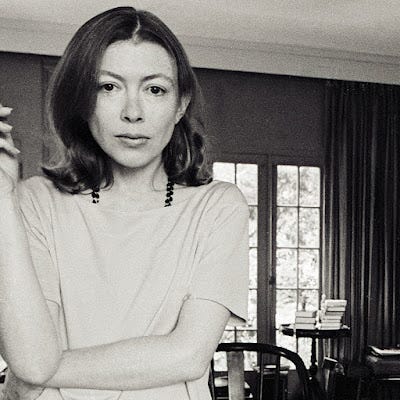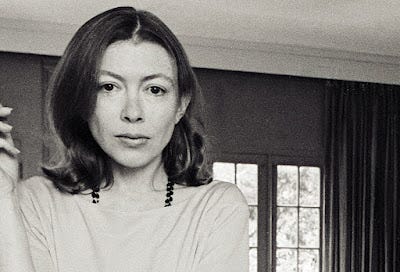Joan Didion felt the 1960s

I wrote this review of the most interesting nuggets in Joan Didion’s book of essays, The White Album, a few months ago and never published it (you should see my long draft list of material intended for publication here). Now seems like a fitting time to release it. RIP Joan Didion, who has died at age 87.
In 1968, author Joan Didion was evaluated at a Santa Monica psych ward as losing touch with reality, when in fact she was suffering from vertigo and nausea. This was shortly before she was named Los Angles Times “Woman of the Year.” While not mentally ill, she does indeed have gripping insights into the time period of 1966 to 1971, while living in Hollywood.
She describes sitting in the studio with The Doors as one of the most boring scenes imaginable, with unresolved conversations and faraway eyes all around.
Didion talked to Huey Newton, the famed Black Panther who was shot and could barely talk his way into Kaiser Hospital, of which he was in the enrolled members program. The rage of being Black in America was apparent during this time in the 1960s, as it has been ever since Black people set foot on this land.
When she got the news, while sitting poolside in Beverly Hills, about the Manson murder of Sharon Tate and friends, Didion said the misinformation coming out was intense and she remembers that nobody was surprised because there had been jitters and tension throughout L.A. that 1969 summer.
She interviewed the Manson Family’s Linda Kasabian in her women’s prison after the murders and they never discussed the case, always leaning more towards the prisoner’s high-school romances, her concerns for her children, and her dream to open a restaurant/pet shop.
Many of the rest of the essays cover other California oddities, like the aura of the governor’s mansion, the Getty Museum, and the Caltrans L.A Operations Center.
Didion closes the book as she leaves Malibu in 1978, when the regular fires and floods nearly consumed the family’s house. It seems like a good way to end the story of California in the 1960s era. Although that era seems to live on, in many ways, with perhaps growing intensity.




